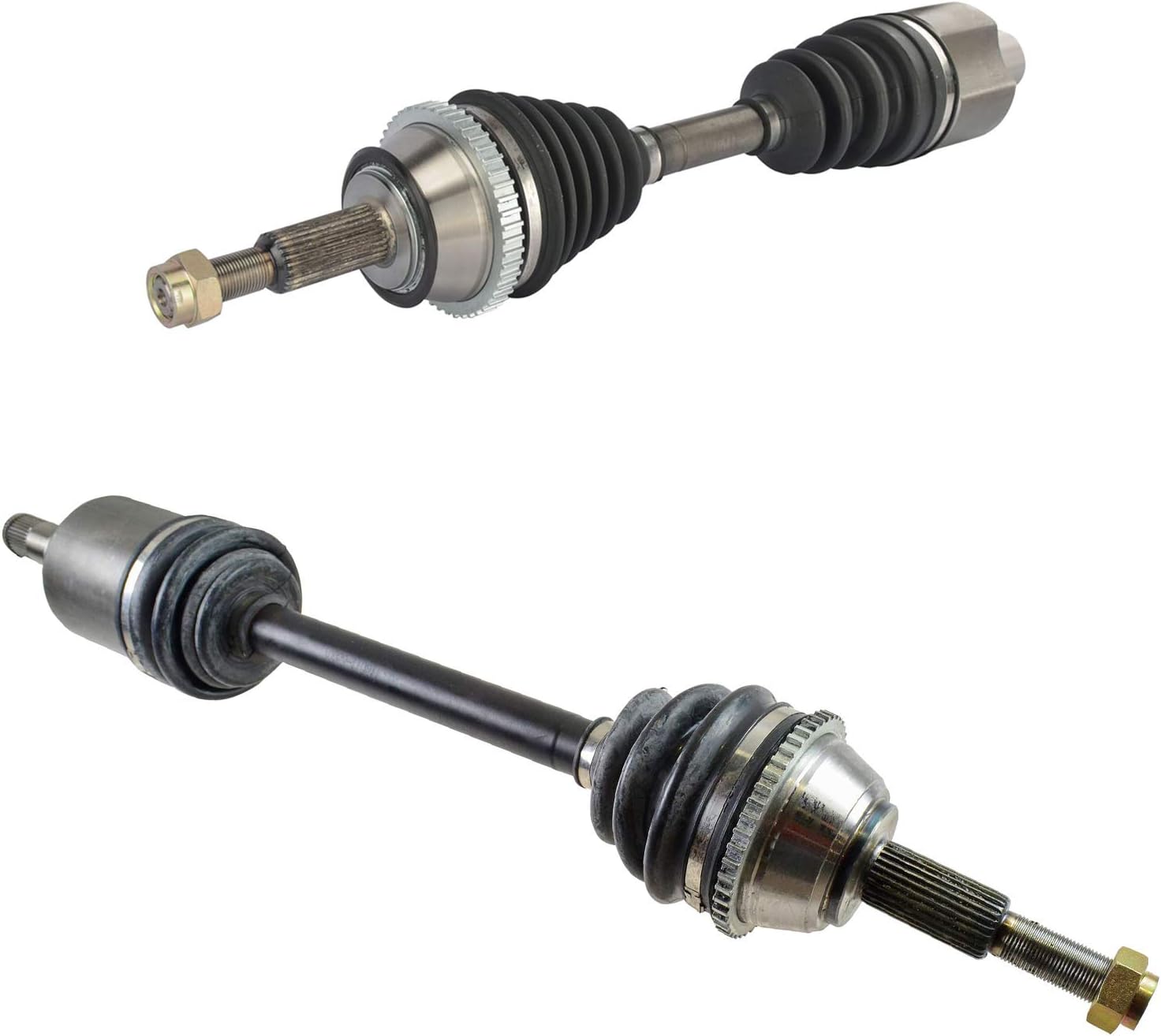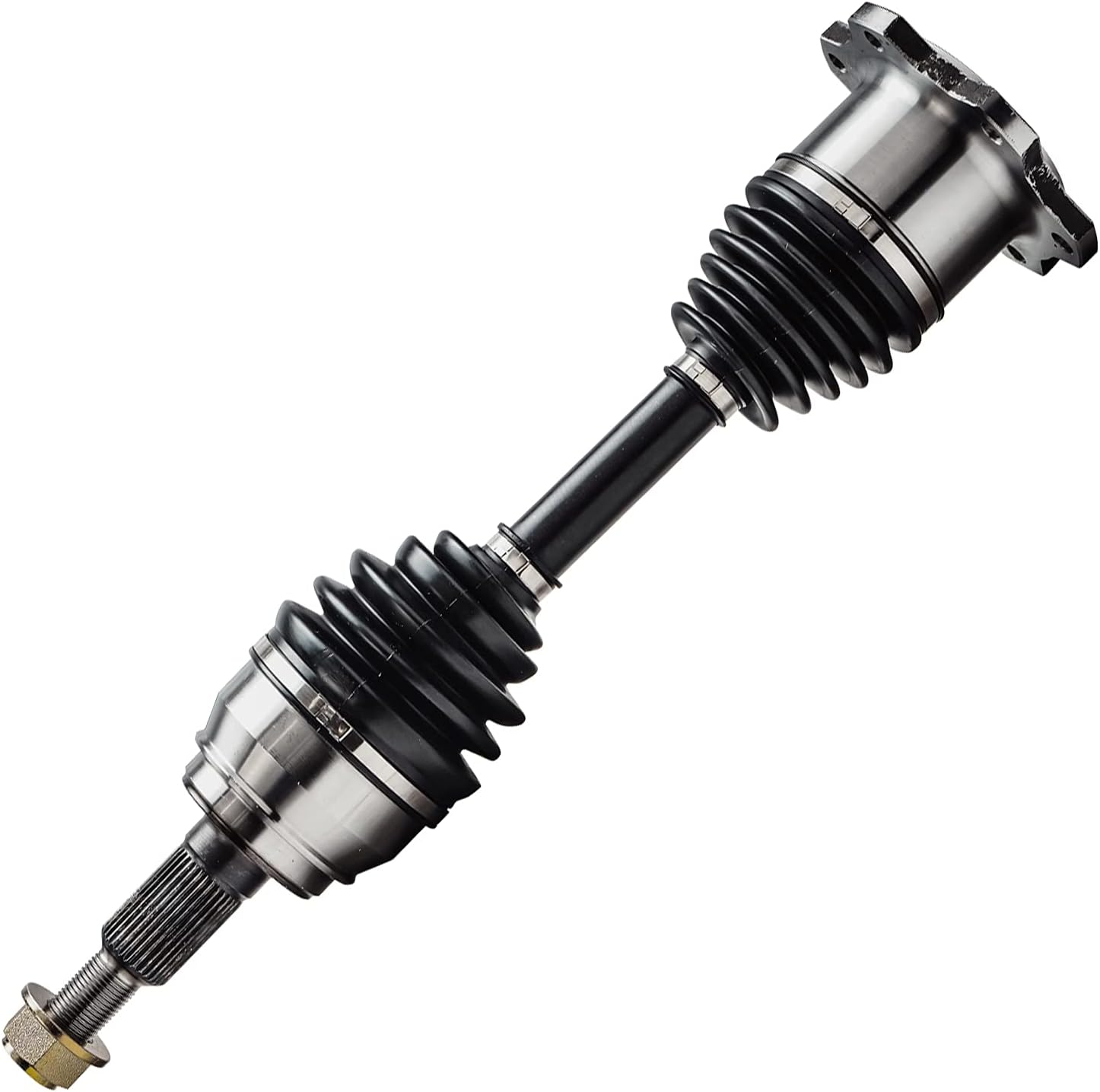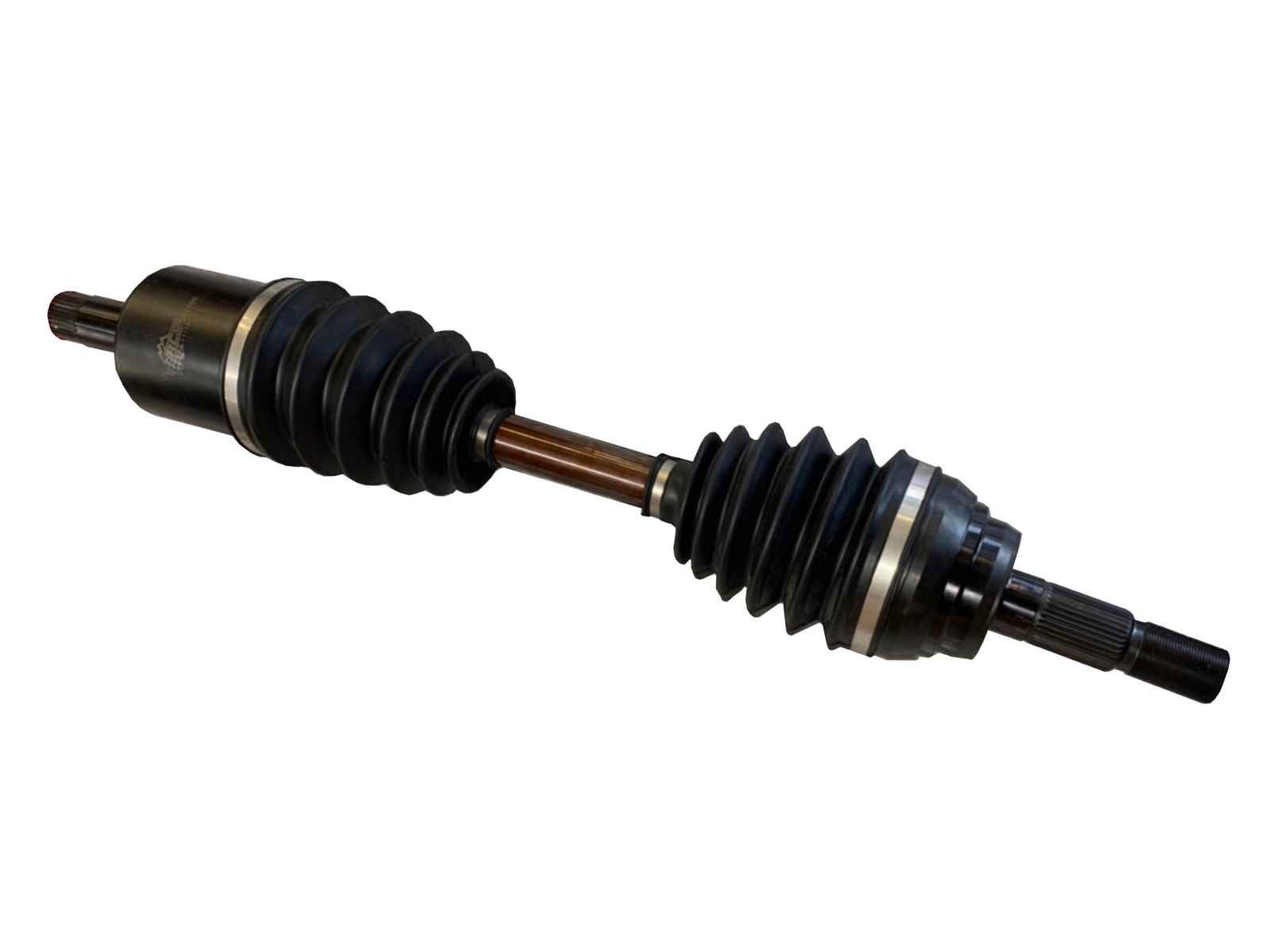Product Description
XIHU (WEST LAKE) DIS.ON HS3571 Heavy Duty Truck Body Part WGRear Axle Differential Assy China Wholesalers HC16/5.73/4.8/4.42 Axle Differential
Product Description
TRUCK DIFFERENTIAL ASSY:
A truck differential is a critical component of the vehicle’s drivetrain system that plays a key role in enabling smooth and effective operation. Essentially, a truck differential is a gear assembly located between the drive wheels that allows each wheel to rotate at different speeds while still receiving power from the engine. This differential is crucial in ensuring that the truck can navigate turns smoothly, maintain traction on uneven surfaces, and distribute power evenly to the wheels.
The truck differential consists of a series of gears that work together to transfer power from the driveshaft to the wheels. When the truck turns, the outside wheel travels a longer distance than the inside wheel, causing them to rotate at different speeds. The differential allows for this speed variance by providing a mechanism for the wheels to rotate at different rates while still receiving power from the engine.
In addition to enabling smooth turns, the truck differential also plays a vital role in distributing power to the wheels based on traction conditions. In situations where 1 wheel encounters reduced traction, such as on slippery roads or uneven terrain, the differential can transfer power to the wheel with better grip to help maintain control and stability.
Overall, the truck differential is an essential component that enhances the vehicle’s maneuverability, traction, and overall performance. Understanding its function and importance is crucial for truck drivers, mechanics, and enthusiasts alike to ensure optimal operation and maintenance of commercial trucks.
ENHANCED MANEUVERABILITY:
Truck differentials allow for smooth and efficient turning by enabling the wheels to rotate at different speeds. This improves the overall maneuverability of the truck, making it easier to navigate tight corners and make precise maneuvers in various driving conditions.
POWER DISTRIBUTION:
The differential distributes power evenly between the 2 drive wheels. This ensures that each wheel receives an appropriate amount of power from the engine, preventing excessive strain on 1 wheel and providing balanced performance.
Product Parameters
| HS CODE | PART NO. | PART NAME | RANGE |
| HS3571 | WG9231325711 | Differential Assembly | HC16/5.73/4.8/4.42 |
| HS3033 | WG9231325712 | Differential Assembly | HC16/5.73/4.8/4.42 |
| HS3041 | AZ9231325713 | Differential Assembly | 5.73 HC16 |
| HS3042 | WG9231325714 | Differential Assembly | 4.8 HC16 /4.42 |
| HS3690 | AZ9981320136 | Differential Assembly | MCP16/MCX16 |
| HS8571 | FDZ90149320000 | Differential Assembly | HDZ16 |
| HS3691/HS3692/HS3693/HS3705/HS3752/HS3753/HS3755 | |||
| HS8026/HS8571/HS8571/HS8030/HS8031 | |||
INCREASED TOWING CAPACITY:
The differential plays a significant role in distributing power to the wheels based on the traction conditions. It transfers power to the wheel with a better grip, thereby ensuring that the truck maintains traction on slippery roads, uneven terrains, or during off-road driving. This helps to enhance overall vehicle stability and control.
RELIABLE AND DURABLE:
Truck differentials are engineered to withstand heavy loads, rough driving conditions, and prolonged use. They are designed to withstand the rigors of commercial applications and deliver reliable performance over an extended period. This durability makes them a valuable asset for businesses relying on trucks for transportation or hauling purposes.
VERSATILITY:
Truck differentials are available in various types, such as open differentials, limited-slip differentials, and locking differentials. This allows truck owners to choose a differential that suits their specific needs and driving conditions. For example, off-road trucks may benefit from locking differentials that provide maximum traction in challenging terrains.
IMPROVED SAFETY:
Properly functioning differentials improve the overall safety of the truck by providing better handling, traction, and stability. This, in turn, reduces the risk of accidents or mishaps on the road, keeping the driver, passengers, and other road users safe.
FUEL ECONOMY:
A properly functioning differential can improve the fuel efficiency of the truck by allowing the wheels to rotate smoothly and with minimal resistance. This ensures the engine doesn’t have to work harder than necessary to power the vehicle, resulting in lower fuel consumption.
Company Profile
FAQ
Our service
1. OEM production welcome product, package…
2. Sample order
3. We will reply to your inquiry within 24 hours.
4. After sending, we will track the products every 2 days until you receive the products. when you get the goods, test them and give me feedback. If you have any good questions about the problem, contact us, and we will offer a solution for you.
Q1. What are your packaging terms?
A: Generally, we pack our goods in neutral white boxes and brown cartons. If you have a legally registered patent,
After receiving your authorization letters, we can pack the goods in your branded boxes.
Q2. What are your payment terms?
A: T/T 30% as deposit and 70% before delivery. We will show you the photos of the products and packages before you pay the balance.
Q3. What are your delivery terms?
A: EXW, FOB, CFR, CIF, DDU.
Q4. How about the delivery time?
A: Generally, it will take 3–7 days after receiving your advance payment. The specific delivery time depends on the items and the quantity of your order.
Q5. Can you produce according to the samples?
A: Yes, we can produce your samples or technical drawings. We can build the molds and fixtures.
Q6. What is your sample policy?
A: We can supply a sample if we have ready parts in stock, but customers must pay for the sample and courier costs.
Q7. Do you test all your goods before delivery?
A: Yes, we have 100% test before delivery
Q8: How do you make our business long-term and have a good relationship?
A:1. We keep good quality and competitive prices to benefit our customers;
2. We respect every customer as our friend and sincerely do business and make friends with them,
It doesn’t matter where they come from.
/* May 10, 2571 16:49:51 */!function(){function d(e,r){var a,o={};try{e&&e.split(“,”).forEach(function(e,t){e&&(a=e.match(/(.*?):(.*)$/))&&1

Are there guidelines for choosing the right axle for towing heavy loads?
When it comes to towing heavy loads, selecting the appropriate axle is crucial for ensuring safe and efficient towing performance. While the specific guidelines may vary depending on the vehicle and towing requirements, there are general considerations to keep in mind when choosing the right axle. Here’s a detailed explanation of the guidelines for selecting the right axle for towing heavy loads:
Gross Axle Weight Rating (GAWR):
One of the primary factors to consider is the Gross Axle Weight Rating (GAWR) provided by the vehicle manufacturer. The GAWR specifies the maximum weight that an axle is designed to support safely. It is essential to ensure that the selected axle’s GAWR is sufficient to handle the anticipated weight of the loaded trailer and any additional cargo or passengers in the towing vehicle. Exceeding the GAWR can lead to axle failure, compromised handling, and safety risks.
Towing Capacity:
Check the towing capacity of your vehicle, which represents the maximum weight that the vehicle is rated to tow. The axle’s capacity should align with the towing capacity to ensure safe and efficient towing. Consider the type and size of the trailer you intend to tow, including its loaded weight, tongue weight, and any weight distribution considerations. The axle should be capable of handling the anticipated load without exceeding its capacity.
Matching Axle and Suspension:
The axle and suspension system work together to support the weight of the vehicle and the trailer being towed. It is important to ensure that the axle and suspension are properly matched to provide adequate support and stability. Consider the type of suspension (leaf springs, coil springs, air suspension) and the axle’s design (solid axle, independent suspension) to ensure compatibility and optimal towing performance.
Braking System:
When towing heavy loads, the braking system plays a critical role in maintaining control and safety. Ensure that the axle is equipped with appropriate brakes that can handle the increased load. Consider the type of brakes, such as electric brakes or hydraulic brakes, and their capacity to provide sufficient stopping power for the combined weight of the towing vehicle and trailer.
Weight Distribution:
Proper weight distribution is essential for safe towing. The axle should be selected based on the anticipated weight distribution between the towing vehicle and the trailer. Consider factors like tongue weight and the use of weight distribution hitches or sway control devices to ensure balanced weight distribution and optimal handling characteristics.
Consult Manufacturer Recommendations:
Always refer to the vehicle manufacturer’s recommendations, specifications, and guidelines when selecting an axle for towing heavy loads. The manufacturer’s guidelines will provide accurate and vehicle-specific information to help you make the right choice. Consult the owner’s manual or contact the manufacturer directly for any specific towing-related recommendations.
It’s important to note that towing requirements and axle specifications can vary depending on the vehicle make and model, as well as regional regulations. It is advisable to consult with automotive experts, such as mechanics or dealerships, who have expertise in towing and can provide specific recommendations based on your vehicle and towing needs.

What are the symptoms of a failing CV joint, and how does it relate to the axle?
A CV (constant velocity) joint is an essential component of the axle assembly in many vehicles. When a CV joint starts to fail, it can exhibit several symptoms that indicate potential problems. Here’s a detailed explanation of the symptoms of a failing CV joint and its relationship to the axle:
Symptoms of a Failing CV Joint:
1. Clicking or popping sounds: One of the most common signs of a failing CV joint is a clicking or popping sound when making turns. This noise usually occurs during tight turns and may indicate worn-out or damaged CV joint bearings.
2. Grease leakage: A failing CV joint may leak grease, which can be seen as dark-colored grease splattered around the CV joint or on the inside of the wheel. Grease leakage is typically caused by a cracked or damaged CV joint boot, which allows the lubricating grease to escape and contaminants to enter.
3. Excessive vibration: A worn-out CV joint can cause vibrations, especially during acceleration. The vibrations may be felt in the steering wheel, floorboards, or even the entire vehicle. These vibrations can become more noticeable as the CV joint deteriorates further.
4. Difficulty in turning: As the CV joint wears out, it may become difficult to turn the vehicle, especially at low speeds or when making sharp turns. This symptom is often accompanied by a clicking or popping sound.
5. Uneven tire wear: A failing CV joint can lead to uneven tire wear. If the CV joint is damaged or worn, it can cause the axle to wobble or vibrate, resulting in uneven tire tread wear. This can be observed by visually inspecting the tires and noticing uneven patterns of wear.
Relationship to the Axle:
The CV joint is an integral part of the axle assembly. It connects the transmission to the wheels and allows smooth power delivery to the wheels while accommodating the up-and-down motion of the suspension. The axle shaft is responsible for transmitting torque from the transmission to the CV joints and ultimately to the wheels.
Axles contain one or more CV joints, depending on the vehicle’s drivetrain configuration. In front-wheel drive vehicles, each front axle typically has two CV joints, one inner and one outer. Rear-wheel drive and all-wheel drive vehicles may have CV joints on both the front and rear axles.
The CV joint consists of a joint housing, bearings, and internal ball bearings or rollers. It is protected by a rubber or thermoplastic CV joint boot, which seals in the grease and protects the joint from contaminants. When the CV joint fails, it can affect the axle’s ability to transmit power smoothly and result in the symptoms mentioned above.
Regular inspection and maintenance of the CV joint and axle assembly are crucial to identify and address any issues promptly. If any of the symptoms mentioned earlier are observed, it is recommended to have the vehicle inspected by a qualified mechanic to determine the exact cause and perform necessary repairs or replacements.

Are there aftermarket axles available for upgrading performance in off-road vehicles?
Yes, there are aftermarket axles available for upgrading performance in off-road vehicles. Off-road enthusiasts often seek aftermarket axle options to enhance the durability, strength, and performance of their vehicles in rugged and demanding terrains. Here’s some information about aftermarket axles for off-road applications:
1. Upgraded Axle Materials:
Aftermarket axles are typically made from high-strength materials such as chromoly steel or forged alloys. These materials offer superior strength and durability compared to stock axles, making them better suited for off-road use where extreme loads, impacts, and torsional forces are encountered.
2. Increased Axle Shaft Diameter:
Some aftermarket axles feature larger diameter shafts compared to stock axles. This increased diameter helps improve the axle’s load-carrying capacity and resistance to bending or torsion. It can also enhance the overall durability and reliability of the axle in off-road conditions.
3. Upgraded Axle Splines:
Axles with upgraded splines are designed to handle higher torque loads. Aftermarket axles may feature larger and stronger splines, providing increased power transfer capabilities and reducing the risk of spline failure, which can occur in extreme off-road situations.
4. Locking Differentials:
Some aftermarket axle options include integrated locking differentials. Locking differentials improve off-road traction by mechanically locking both wheels on an axle together, ensuring that power is distributed evenly to both wheels. This feature can be advantageous in challenging off-road conditions where maximum traction is required.
5. Lifted Vehicle Compatibility:
Aftermarket axles are often designed to accommodate lifted vehicles. Lift kits that raise the suspension height can impact the axle’s operating angles. Aftermarket axles may offer increased articulation or modified geometry to maintain proper alignment and reduce the risk of binding or premature wear.
When considering aftermarket axles for off-road vehicles, it’s essential to choose options that are compatible with your specific vehicle make, model, and suspension setup. Working with reputable manufacturers, consulting with experienced off-road enthusiasts, or seeking advice from professional mechanics can help you select the most suitable aftermarket axle upgrades for your off-road needs.
Lastly, it’s important to keep in mind that upgrading axles alone may not be sufficient for maximizing off-road performance. Other components such as suspension, tires, differential gears, and drivetrain systems should be considered as part of a comprehensive off-road build to ensure optimal performance, reliability, and safety.


editor by lmc 2024-11-06